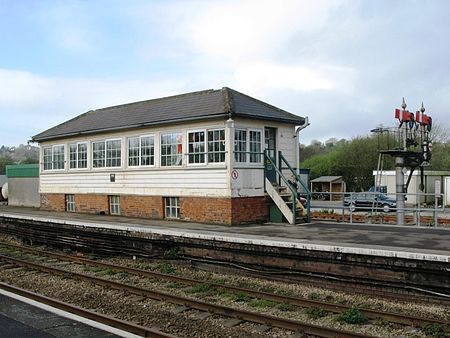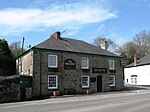Par signal box

Par signal box is a Grade II listed former Great Western Railway signal box, located on Par railway station in Cornwall, England. Opened in 1879 and built to the first GWR standard design, it was set up to control the GWR's mainline onwards to Penzance, together with the junction for the branch to Newquay. Located at the southern end of Platform 2, when first built it was less than half its current length, only containing 26 levers. In 1913, the frame was replaced, and a new frame of 57 levers was added. A panel has since been added to control the section through to St Austell and Burngullow as far west as the now closed Probus and Ladock railway station. Signals controlled from Par carry the identification code 'PR'. In July 2013, it was one of 26 "highly distinctive" signal boxes listed by Ed Vaizey, minister for the Department for Culture, Media and Sport in July 2013, in a joint initiative by English Heritage and Network Rail to preserve and provide a window into how railways were operated in the past.
Excerpt from the Wikipedia article Par signal box (License: CC BY-SA 3.0, Authors, Images).Par signal box
Par Beach Trail,
Geographical coordinates (GPS) Address Nearby Places Show on map
Geographical coordinates (GPS)
| Latitude | Longitude |
|---|---|
| N 50.354976 ° | E -4.704826 ° |
Address
Par Beach Trail
PL24 2LT , Tywardreath and Par
England, United Kingdom
Open on Google Maps










